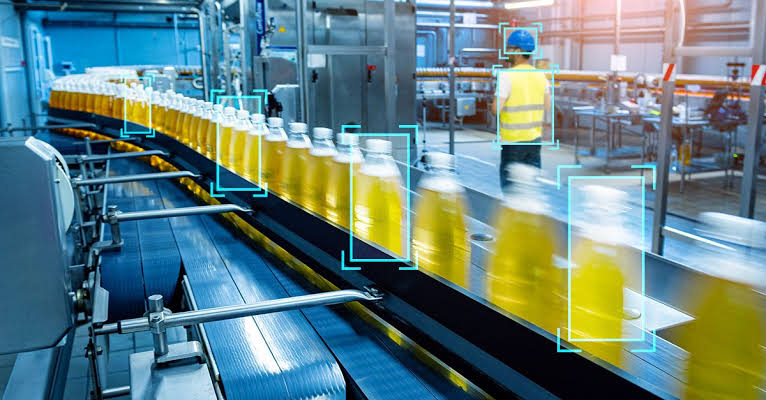Computer vision has emerged as a game-changing technology in automated quality control, offering speed, accuracy, and scalability that traditional inspection methods cannot match.
Over the past ten years, technological advancements aimed at enhancing productivity, consistency, and product quality have caused a remarkable transformation in the manufacturing sector. The incorporation of computer vision into quality inspection systems is one of the most significant developments in this field as of June 2025. High-resolution imaging and artificial intelligence are combined in computer vision-based automated quality control to instantly detect, analyse, and assess product integrity. Because it enables quicker processing, fewer errors, and more scalable operations, this innovation is completely changing the way manufacturers approach quality assurance.
The Foundations Of Manufacturing Computer Vision
A subfield of artificial intelligence called computer vision enables machines to comprehend and interpret visual information from their environment. In manufacturing, this means making it possible for cameras and computers to examine goods on assembly lines more consistently and precisely than humans can. Computer vision systems can identify patterns, shapes, and anomalies in a variety of materials and products by using large datasets of images, both perfect and flawed, to train algorithms.
Cameras, lighting, and image processing software are all necessary components of these systems. The AI model analyses an image after it is taken in order to find any deviations from the predetermined parameters. Because the results are produced instantly, faulty products can be taken off the production line.
Machine Precision to Replace Human Inspection
Human labour has historically been a major component of quality inspection. Employees visually check products for defects like dimensional errors, colour mismatches, scratches, and improper labelling. Although this approach has been used by industries for many years, it is prone to oversight, inconsistency, and fatigue, particularly in high-speed manufacturing settings.
By providing constant, round-the-clock monitoring free from interruptions, distractions, or performance degradation, computer vision removes these restrictions. These systems offer repeatable and dependable evaluations once they are configured. Even the most skilled human inspectors cannot match the over 99 percent detection accuracy of many sophisticated computer vision platforms as of 2025. Furthermore, subjective judgement has no effect on these systems. They guarantee a consistent quality standard by using the same inspection criteria for each product.
Uses in Various Industries
Computer vision-based automated quality inspection is not just used in one sector. Currently, it is used in a number of industries, such as electronics, food and beverage, textiles, pharmaceuticals, and automobiles. Computer vision systems are used in the automotive industry to inspect parts such as tires, engine parts, brake pads, and bolts for flaws or incorrect assembly. These systems examine circuit boards, microchips, and wiring layouts in electronics to make sure that even the smallest defects are found.
Computer vision is used in the food industry to detect contamination, product defects, and packaging mistakes. Similarly, in order to comply with stringent regulatory requirements, pharmaceutical companies depend on these systems to accurately inspect tablets, capsules, and labels. Every sector has its own advantages.
Adaptive learning and real-time feedback
Real-time feedback is a major benefit of computer vision systems. On the production line, problems like misaligned machinery or inconsistent materials can be fixed right away by manufacturers. This reduces waste and downtime by enabling immediate corrections. Furthermore, a lot of systems now have adaptive learning features.
This indicates that they keep getting better over time by picking up new information. The system adds a newly discovered and verified flaw to its database so that it can be recognised in the future without the need for human assistance. The inspection procedure will adapt to shifting production requirements and product variations thanks to this dynamic improvement loop.
Connecting With More Comprehensive Industry 4.0 Systems
A major element of the larger Industry 4.0 movement, which prioritises smart factories and networked systems, is computer vision in quality control. Computer vision systems are incorporated into a complete manufacturing ecosystem through integration with cloud computing, data analytics platforms, and industrial Internet of things (IIoT) devices.
For example, camera-gathered inspection data can be examined to spot patterns in product flaws, assisting producers in identifying the underlying cause, be it a broken machine or inferior raw material. These insights make it possible to make data-driven decisions that enhance resource usage, process effectiveness, and product quality. Digital twins, or virtual representations of their production lines, are also being used by many businesses to model how changes to equipment or materials might impact the quality of their output.
Obstacles and Things to Think About
Computer vision has many advantages, but there are drawbacks to using it for quality control. Particularly for small and medium-sized businesses, initial setup costs can be substantial. Capital investment is needed for the infrastructure, which includes servers, software licenses, and high-resolution cameras. Furthermore, access to sizable datasets of labelled images—which can be laborious to gather—is necessary for training AI models.
A computer vision system's efficacy is largely dependent on the calibre of its training data and the skill of the engineers setting it up. Additionally, environmental elements that can affect image quality include dust, lighting, and vibrations on the factory floor. To guarantee dependable performance, these factors need to be carefully controlled. Lastly, workforce training is crucial.
Automated Quality Control's Future
Computer vision will likely be used in manufacturing even more globally as the technology develops, including in developing nations like Nigeria. These systems are becoming faster and more effective thanks to advancements in edge computing, which processes data locally rather than in the cloud. Similarly, smaller businesses are finding it easier to enter the market thanks to the increasing availability of reasonably priced AI hardware.
Additionally, multimodal inspection systems are becoming more popular. These systems use computer vision in conjunction with other sensors, such as X-ray, ultrasonic, or infrared, to find internal flaws that are not visible to the naked eye. The quality control capabilities in intricate manufacturing processes will be further improved by these hybrid systems.
